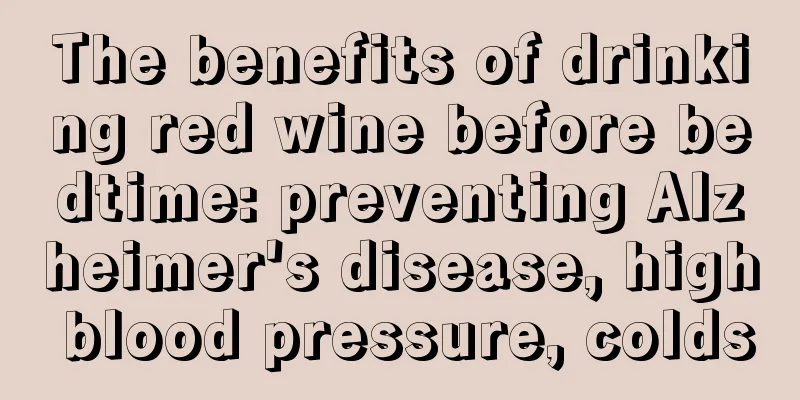What are the interventional treatments for advanced liver cancer? Four interventional treatments for advanced liver cancer

|
The currently recognized radical treatment methods for small liver cancer in the medical community include surgical resection, local ablation and liver transplantation. However, in reality, most patients with liver cancer are in the middle and late stages. This is because, except for the liver capsule and Gleason's sheath, there are no nerves in most of the liver parenchyma. Therefore, when the tumor growing in the liver is small, generally less than 5cm, there is no pain and no symptoms. Therefore, patients will not take the initiative to check, so early liver cancer is not easy to be found except for ultrasound examination. Most of the clinically symptomatic liver cancers are in the middle and late stages, and at this time, patients often miss the opportunity for radical treatment, and treatment is very difficult. In addition, about 80% of liver cancer patients are accompanied by cirrhosis, liver dysfunction, ascites, poor coagulation mechanism, etc., which greatly limits surgical resection. Liver transplantation technology is complex, liver sources are limited, long-term anti-rejection drugs are taken after transplantation, the cost is expensive, and there are many complications. In short, there are many problems. Therefore, the main goal of treating advanced liver cancer is to improve the patient's quality of life, prolong survival time, and relieve pain. It is also the disease we face most and have to try to overcome. Appropriate non-surgical local minimally invasive therapy is the first choice, and killing a large number of cancer cells is the central link of comprehensive treatment. Minimally invasive interventional treatment: 1. Transarterial chemoembolization (TACE) Percutaneous transfemoral hepatic artery embolization is the first choice for patients with liver cancer who cannot undergo surgery. The principle is based on the fact that 25% of the blood supply to normal liver tissue comes from the hepatic artery and 75% comes from the portal vein, while the blood supply to liver cancer nodules comes almost entirely from the hepatic artery. Theoretically, if the hepatic artery branch that provides nutrition to the tumor is cannulated and embolized, it can not only block the blood supply to the cancer tissue and limit tumor growth, but also cause necrosis and shrinkage of the cancer tissue without causing liver failure. However, liver cancer still has portal vein blood supply and extrahepatic blood supply, and the blood supply situation is very complicated, such as the blood vessels wrapped in the greater omentum and the blood vessels on the diaphragm, which are beyond the reach of interventional embolization. For some people, the embolization of the cancerous blood vessels is not as good as expected. 2. Alcohol injection method pEI was developed in 1982 and is mainly used to treat small liver cancer. Anhydrous alcohol injection therapy is to insert a puncture needle into the tumor body through the skin under the guidance of interventional ultrasound, and inject anhydrous alcohol or a hardener. The main mechanism of action is to use anhydrous alcohol to quickly dehydrate and fix the tumor tissue, causing ischemia and necrosis of the tumor tissue. This method is simple to operate, less painful, less complicated, and low in cost, but it also has side effects such as easy diffusion during injection and liver damage. 3. Percutaneous microwave coagulation therapy (pMCT) It is not only suitable for small liver cancer, but also for middle and late stage liver cancer, the combination of multi-level, multi-needle, multi-point, multi-power and time can achieve the effect of eliminating tumors. Moreover, the stimulation of coagulated necrotic tumor tissue can enhance the body's immunity and regulate residual tissue cells or those that are still in the process of canceration, opening up a new way for the treatment of liver cancer. 4. Permanent implantation of radioactive particles between tissues It is a new method for treating liver cancer. Some people in the medical field have vividly called it "particle knife". It uses minimally invasive methods such as ultrasound intervention to directly apply multiple packaged radioactive isotopes with certain specifications and activities into the liver cancer tissue through a source applicator or source catheter. The radiation sources are arranged in a certain pattern according to the size and shape of the tumor, and the tumor tissue is irradiated at a close distance and with a high dose to achieve the purpose of curing the disease. 5. Biological therapy Tumor biotherapy is a new method of tumor prevention and treatment using modern biotechnology and its products. With the in-depth study of the molecular mechanism of tumor occurrence and development and the development of biotechnology, biotherapy has become a new model in comprehensive tumor treatment and has received more and more attention. Currently, the biological treatment drugs that can be used alone or in combination with other methods include |
Recommend
How to relieve cracked and swollen lips?
If the lips are damaged and swollen, the patient ...
What is the reason for spitting black phlegm in the morning
From a health perspective, if everything is norma...
Will drinking more water in summer make you fat?
Water is an indispensable thing in our daily life...
What should I use to wash oil stains on clothes?
There are many ways to wash clothes, but we don&#...
Can Traditional Chinese Medicine Cure Hamartoma
Hamartoma is a common disease. Patients with hama...
What is the normal value of alkaline phosphatase
There are various proteases in our body, and alka...
Can papaya cream cure sunburn?
In the summer in the north, the temperature will ...
Why do I have frequent and urgent urination when I sleep at night
The human body always has some symptoms that affe...
What is the best treatment for vitiligo
Vitiligo is a very harmful skin disease. This dis...
Treatment costs for early liver cancer
How much does it cost to treat liver cancer? Live...
What is the cause of chlamydia infection
The problem of chlamydia infection cannot be easi...
How to treat otitis externa effectively
I don’t know how many friends know about otitis e...
Beware of the four typical symptoms of laryngeal cancer
Due to the different primary growth sites of canc...
Is stage 2a cervical cancer serious?
Patients with cervical cancer often have a certai...
How air conditioning works
Air conditioners are a very common household appl...









